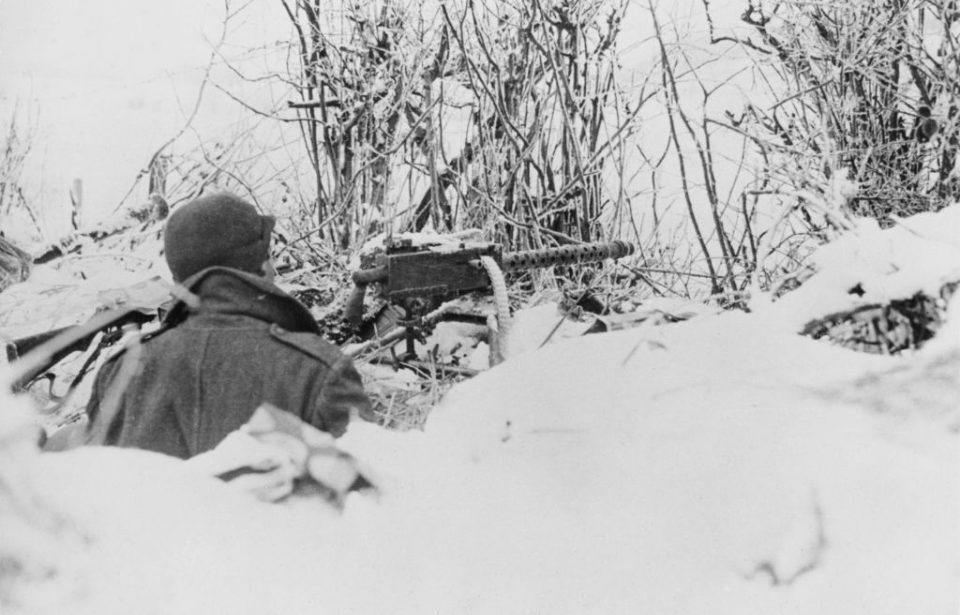The “Screaming Eagles” of the 101st Airborne Division proved their strength, stamina and heroism by pushing themselves to the absolute limit while undermanned and lacking supplies. Fighting against all odds, the 101st kept German troops from gaining ground during World War II. Battle-fatigued from their efforts during D-Day, the division became involved in another game-changing engagement just six months later: the Siege of Bastogne.
The 101st were originally intended to go to Werbomont, but were rerouted to Bastogne, as the 82nd Airborne Division were unable to depart and reach the village earlier. Call it bad luck, but they became the target of a formidable week-long German attack that, if not for their bravery and cunning defenses, could have had a major effect on the outcome of the war.
The importance of Antwerp
As the Allies pushed further than originally anticipated, troops began to move beyond their supply lines. As such, supplies ran low in certain areas and the Allies became reliant on the small shipping town of Antwerp, Belgium. If they were to lose Antwerp, they would be cut off from much-needed supplies and a continued assault would not be possible.
This became a critical part of the German plan to regain lost territory. Military officials devised a blitzkrieg that fed through the Ardennes Forest. If successful, it would force the Allies to sign a peace treaty in favor of the Axis powers.
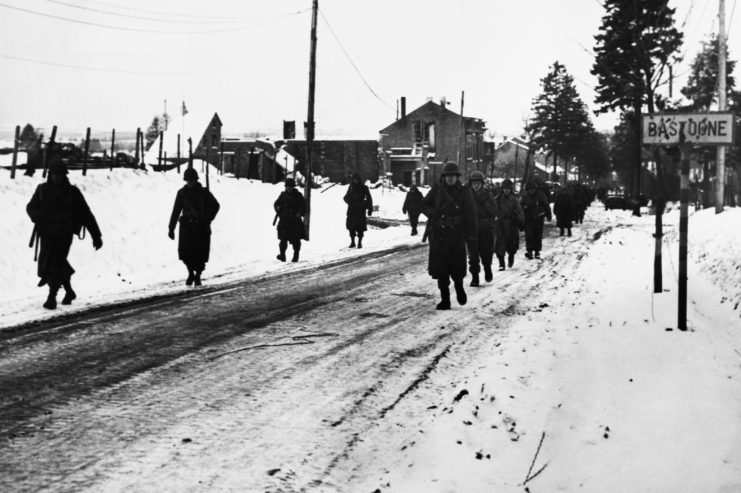
Canadian and British troops were stationed to the north, while the Americans were stationed in the south. In-between was a thin, weak line of troops linking the two sides. To cut off the Allies from Antwerp, the Germans began an attack that took advantage of that line. They were able to use the element of surprise, as the American troops hadn’t suspected an attack from the forest and only patroled the area during the day.
On December 16, 1944, the Germans began their raid, after which some 200,000 soldiers were sent through the forest and toward Bastogne. This prompted Gen. Dwight D. Eisenhower to order the 82nd and 101st Airborne Divisions, together known as the Supreme Headquarters Allied Expeditionary Force (SHAEF) reserve, to move forward from their positions in Reims.
Defending against encirclement
On the night of December 18, 1944, the Germans attacked and nearly took out the 101st Airborne Division’s medical company. By the next morning, the Americans were outnumbered five-to-one. Everything was going in the Germans’ favor, as they had the terrain, supplies, manpower and weather to their advantage.
The Germans had the Americans completely surrounded at Bastogne. To make matters worse, the US forces had few supplies, lacked cold-weather gear and had virtually no senior leadership.
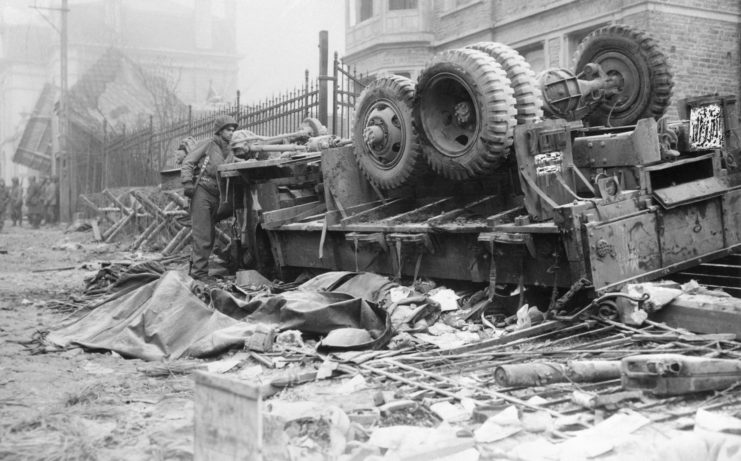
Brig. Gen. Anthony C. McAuliffe came up with a plan to fend off the Germans. He had his men form a perimeter around the 333rd Artillery Battalion’s guns, which allowed them to make a tightly-controlled circle that could quickly respond to attacks. The circle would quickly adjust and meet any attack with open fire.
The fighting was intense, but McAuliffe’s defense strategy worked against the numerically superior enemy.
Brig. Gen. McAuliffe’s response to calls for surrender
On December 22, 1944, German Gen. Heinrich Freiherr von Lüttwitz sent the US forces his demands, telling them the only possible way to save themselves from complete annihilation was an honorable surrender, wherein they gave up Bastogne. In his declaration, he provided the Americans two hours from the time the note was delivered to make their decision.
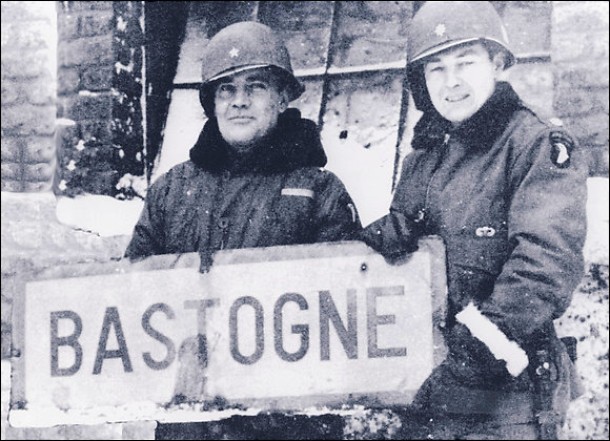
It’s not clear how long it took for McAuliffe to respond to von Lüttwitz demands, but his response was epic. He wrote back to the German general:
“To the German Commander.
NUTS!
The American Commander.”
This response was not received kindly by von Lüttwitz, and he quickly made the call to put all of his force’s efforts into trying to capture Bastogne, even at the expense of securing Antwerp. At full force, German panzer tanks broke the American line, but artillery shells were sufficient in keeping them off long enough for infantrymen to retake their positions.
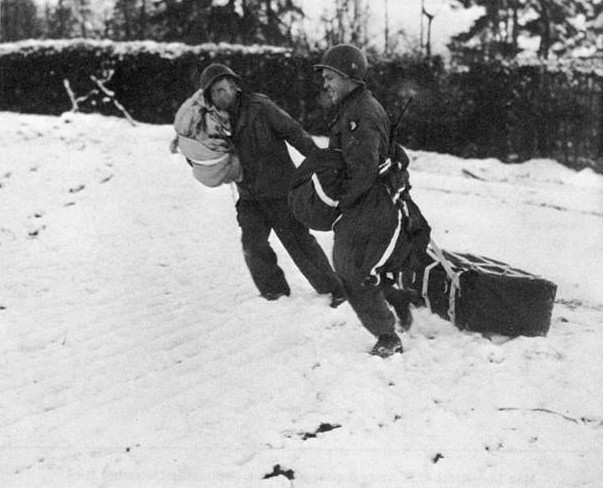
By December 23, the skies were clearing and the 101st Airborne Division started airdropping much-needed supplies and reinforcements. P-47 Thunderbolts took to the air and began targeting the German panzers.
Gen. George Patton’s Third Army arrives
The day after Christmas 1944, Gen. George Patton‘s Third Army broke through the German lines and reached Bastogne. Their arrival evened out the odds and allowed the Americans to better fight the advancing German forces. The 101st were rescued and the battle continued for another month.
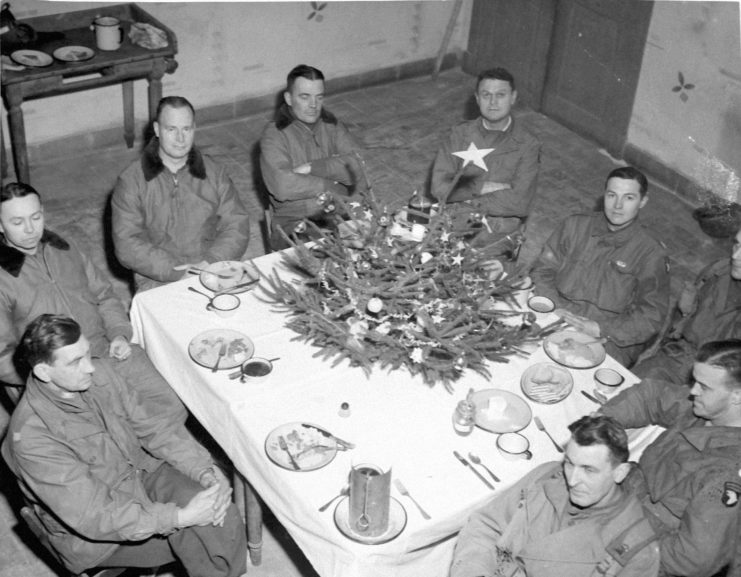
More from us: The American Air Ace Shot Down By Friendly Fire During the Battle of the Bulge
Their success at Bastogne made the siege a defining moment in the 101st Airborne Division’s history. Thanks to well-coordinated, combined arms teams, they were able to keep the uncoordinated German enemy at bay until support arrived, allowing for yet another Allied victory in Europe.
